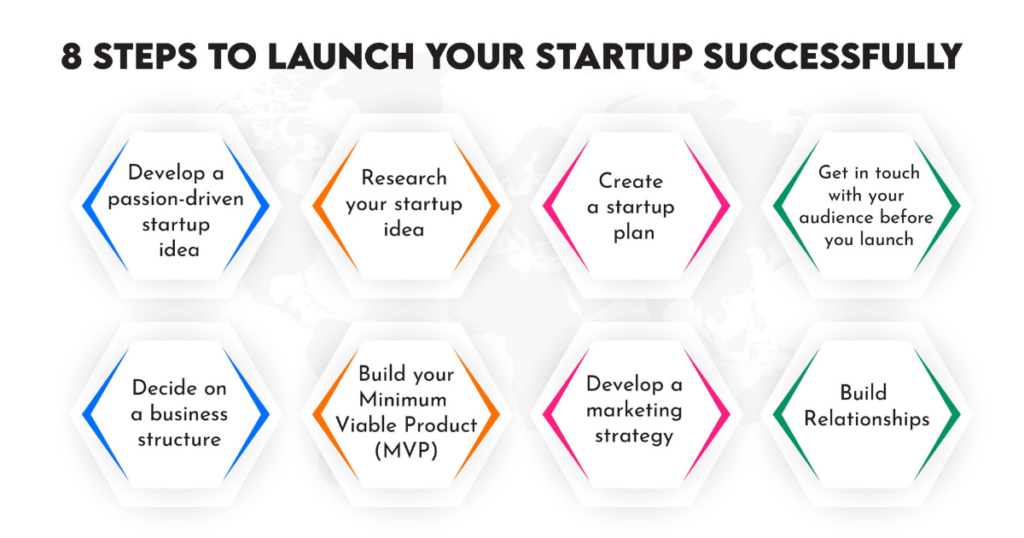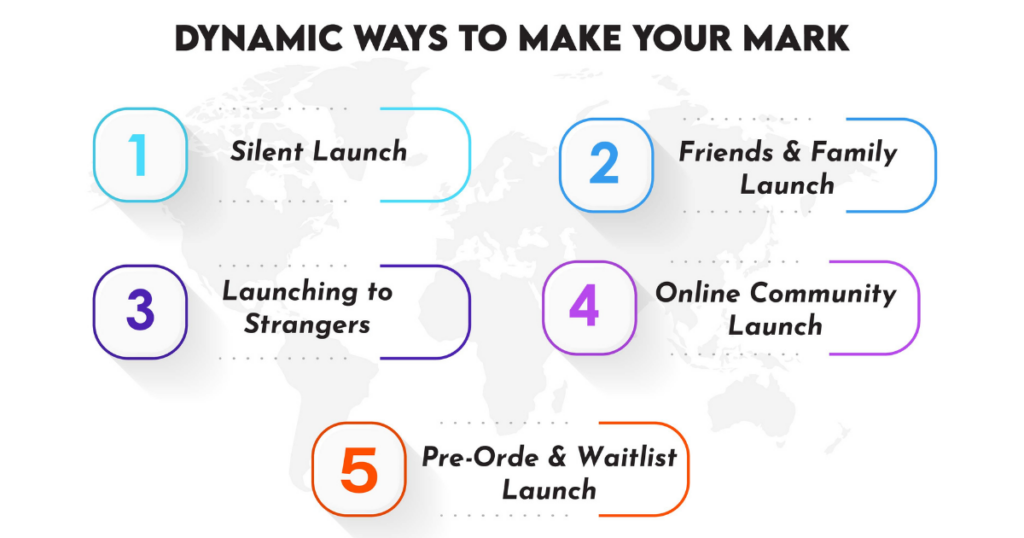This blog gives you a simple introduction to Launch Your Startup. It’s a good starting point for learning. After you understand the basics here, you can explore more by doing additional research.
Ever wondered when the right time is to launch your startup? The answer is simpler than you think: the right time is now. In this blog, we’ll explore the best way to launch your startup successfully, covering everything from timing and pitching to essential steps for a flourishing venture.
Launching Your Startup
Founders often wrestle with the question of timing, but here’s the deal: your strong convictions about your idea are fantastic, yet many remain in the theoretical realm.
Leap—put your product out there, even in its rawest form. This early launch helps you gauge if your solution addresses a big enough problem that people are eager to pay for or use.
According to Paul Buchheit, the creator of Gmail, making a few people happy is better than semi-pleasing many. Focus on cultivating a core of users who genuinely love your product, even if it’s just a handful. Their feedback will guide your iteration journey, helping you refine and expand your user base over time.
Mastering the Art of the Pitch
The first step is crafting a compelling one-sentence pitch that resonates with everyone. Let’s break it down.
Clarity is Key
A crystal-clear vision is the bedrock of a successful startup. Those who deeply understand their idea can articulate it in a way a five-year-old could grasp. Why does this matter? Because simplicity fuels organic growth through word of mouth—the most cost-effective strategy.
Your Pitch, Your Power
As a founder, your ability to communicate succinctly is paramount. You’ll need to win over co-founders, investors, users, and eventually shareholders. Imagine sitting at a dinner table where people are discussing your startup with enthusiasm. To achieve that, make it easy for anyone, from your grandfather to a fellow traveler, to talk about what you do.
Essential Steps to Launch Your Startup Successfully

1. Develop a passion-driven startup idea
Passion drives success. Find an idea that ignites your enthusiasm, as the extra effort required will be a joy, not a burden.
2. Research your startup idea
If you’re planning to sell your product or service, make sure there’s a market. Don’t invest time and energy into a startup that lacks demand.
3. Create a startup plan
An intentional growth strategy for the startup is outlined in the startup plan, which includes everything from defining startup goals to developing startup strategies. Develop a comprehensive plan covering long-term vision, goals, strategy, recruitment, costs, revenue, time frames, and marketing.
4. Get in touch with your audience before you launch
Build relationships early by creating an email list. Give potential users time to sign up, ensuring they feel involved and informed.
5. Decide on a business structure
Choose a business structure wisely, considering tax treatment and liability. Ensure your business name is unique.
6. Build your Minimum Viable Product (MVP)
7. Develop a marketing strategy
A comprehensive marketing strategy is essential for startup success. It goes beyond having a great idea; you need a plan to bring it to the world.
8. Build Relationships
Create a network and engage in marketing and networking activities. Building relationships is as crucial as developing a great product.
Best Time To Launch a Startup
Timing is everything, and understanding when to launch can significantly impact your venture’s success. Market research, competition analysis, technological trends, economic climate, team readiness, and personal circumstances are key factors.
“It’s not about finding the ‘perfect’ moment but aligning key elements such as market demand, competition, technology, and resources.”
Perfecting Your One-Sentence Pitch
Startup founders pitch their companies to thousands of customers, partners, team members, and investors. Use a clear and concise one-sentence pitch format to communicate effectively.
Remember, A business can only be described in one sentence if you know what it is and how it works.
Dynamic Ways to Make Your Mark

Embarking on the exciting journey of launching your startup? Let’s delve into some dynamic ways to make your mark in the early stages.
1. Silent Launch
Start small but start right. A simple landing page with a compelling call to action can work wonders. Lara, a startup school company, nailed it with their “Sign up for the waitlist” CTA.
2. Friends and Family Launch
Share your vision with those closest to you. Use their feedback to refine your pitch, and when you have an MVP, don’t hesitate to launch within your circle.
3. Launching to Strangers
Present your MVP to strangers. Doordash founders gained vital feedback by talking to over 200 small business owners. Immediate feedback can save you from building the wrong solution.
4. Online Community Launch
Leverage your network within online communities. Engage authentically and strategically to gain early users and feedback.
5. Pre-Order and Waitlist Launch
Consider platforms like Kickstarter for physical products. Establishing a waitlist can generate significant interest.
Conclusion
Launching your startup successfully is a combination of timing, effective communication, and strategic planning. The best time to start is now, and by following the essential steps, perfecting your pitch, and adopting dynamic strategies, you can make a significant impact. Remember, while timing plays a crucial role, it’s your commitment, readiness, and ability to adapt that will truly propel your venture to success.
Ready to take your startup to new heights? Reach out to pitch@bventure.com and let’s make it happen!